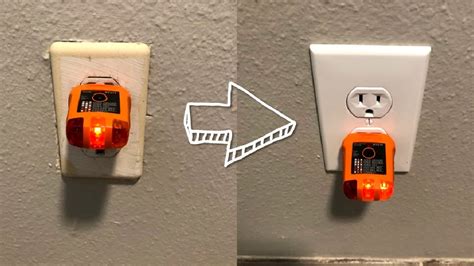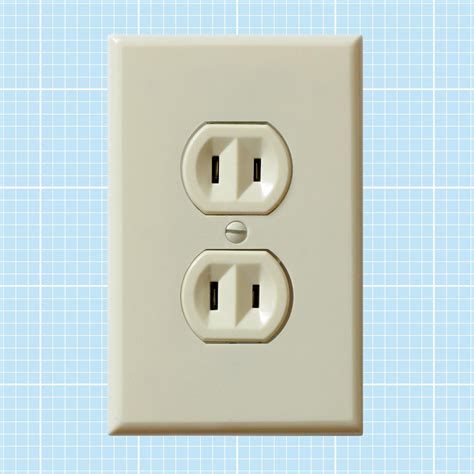can you ground an outlet to a metal box Grounding to a Metal Box. In some cases, if the outlet box is metal and properly connected to the ground, you can ground the outlet to the box. Here’s what to do: Verify that the metal box is grounded. Install a grounding . $159.99
0 · replacing ungrounded outlet
1 · replacing outlets with no ground
2 · replacing outlets with grounded
3 · how to ground ungrounded receptacles
4 · grounding an ungrounded outlet
5 · ground an outlet without wire
6 · converting ungrounded outlets to grounded
7 · changing non grounded outlet to
The Dewalt DWST17806 is a deep tool box designed to provide ample storage for your tools. It measures 17 in W x 12 in D x 13 in H on the outside, with interior dimensions of 10 5/8 in W x 10 5/8 in D x 9 3/4 in H. This black plastic tool box is part of the TSTAK VI series and has a .
Pay close attention - if the ears "bottom out" on the metal of the box, you do not need that ground wire. If they bottom-out against drywall, you need a ground. Unrelated, one more tip on the device-mounting screws.Only metal boxes need to be grounded. However, the grounding wires in a plastic outlet or switch box should not be cut back so short that they are challenging to work with. You must allow . If your receptacle has only two prongs, use a multimeter by placing one lead in the hot port on the receptacle and the other on the metal outlet box or the metal of the plate screw. If the meter reads around 120 V, then the box is . In most cases the socket will pick up ground off the metal box and no ground wire is needed. The conditions for that involve a receptacle marked "Self-Grounding", or hard flush .
Grounding to a Metal Box. In some cases, if the outlet box is metal and properly connected to the ground, you can ground the outlet to the box. Here’s what to do: Verify that the metal box is grounded. Install a grounding . If a metal box is being used, best practice is to insert a green grounding screw into the threaded hole in the back of the box or enclosure. The equipment-grounding wires then connect to the screw, making the metal box . Don't ground to the electrical box. Connecting the ground wire to a metal electrical box will energize the box in the event of a short circuit. The box could overheat and start a fire, or someone could get a shock from touching it. .Here are some Electrical Tip for Home Outlets – Metal receptacle outlet boxes must be grounded, and one method is to pigtail the ground wire so that it is attached to the outlet and the metal .
Where a grounding means exists in the receptacle box, three-prong grounding-type receptacles must be installed as replacements. The green grounding terminal on the receptacle must be connected to the grounding . You don't need a wire to ground the switch, the mounting screws satisfy the requirement when used with metal boxes, and there is an exception that allows you to not satisfy grounding requirements if no grounding means exists for replacement switches. Pay close attention - if the ears "bottom out" on the metal of the box, you do not need that ground wire. If they bottom-out against drywall, you need a ground. Unrelated, one more tip on the device-mounting screws.
Only metal boxes need to be grounded. However, the grounding wires in a plastic outlet or switch box should not be cut back so short that they are challenging to work with. You must allow enough slack so that all wires in an electrical box are at least six inches (150mm) long (Article 300.14). If your receptacle has only two prongs, use a multimeter by placing one lead in the hot port on the receptacle and the other on the metal outlet box or the metal of the plate screw. If the meter reads around 120 V, then the box is grounded. In most cases the socket will pick up ground off the metal box and no ground wire is needed. The conditions for that involve a receptacle marked "Self-Grounding", or hard flush metal-on-metal contact between receptacle yoke (metal frame) and receptacle box.
Grounding to a Metal Box. In some cases, if the outlet box is metal and properly connected to the ground, you can ground the outlet to the box. Here’s what to do: Verify that the metal box is grounded. Install a grounding clip or pigtail to connect the outlet’s ground screw to the box. Install a three-prong receptacle. If a metal box is being used, best practice is to insert a green grounding screw into the threaded hole in the back of the box or enclosure. The equipment-grounding wires then connect to the screw, making the metal box part of the grounding system. Don't ground to the electrical box. Connecting the ground wire to a metal electrical box will energize the box in the event of a short circuit. The box could overheat and start a fire, or someone could get a shock from touching it. Don't rely .Here are some Electrical Tip for Home Outlets – Metal receptacle outlet boxes must be grounded, and one method is to pigtail the ground wire so that it is attached to the outlet and the metal outlet box using a Green grounding Screw.

replacing ungrounded outlet
Where a grounding means exists in the receptacle box, three-prong grounding-type receptacles must be installed as replacements. The green grounding terminal on the receptacle must be connected to the grounding means. The grounding means might be a grounded metal box, or a bare or green copper equipment grounding wire in the box. You don't need a wire to ground the switch, the mounting screws satisfy the requirement when used with metal boxes, and there is an exception that allows you to not satisfy grounding requirements if no grounding means exists for replacement switches. Pay close attention - if the ears "bottom out" on the metal of the box, you do not need that ground wire. If they bottom-out against drywall, you need a ground. Unrelated, one more tip on the device-mounting screws.Only metal boxes need to be grounded. However, the grounding wires in a plastic outlet or switch box should not be cut back so short that they are challenging to work with. You must allow enough slack so that all wires in an electrical box are at least six inches (150mm) long (Article 300.14).
If your receptacle has only two prongs, use a multimeter by placing one lead in the hot port on the receptacle and the other on the metal outlet box or the metal of the plate screw. If the meter reads around 120 V, then the box is grounded.
In most cases the socket will pick up ground off the metal box and no ground wire is needed. The conditions for that involve a receptacle marked "Self-Grounding", or hard flush metal-on-metal contact between receptacle yoke (metal frame) and receptacle box.
Grounding to a Metal Box. In some cases, if the outlet box is metal and properly connected to the ground, you can ground the outlet to the box. Here’s what to do: Verify that the metal box is grounded. Install a grounding clip or pigtail to connect the outlet’s ground screw to the box. Install a three-prong receptacle. If a metal box is being used, best practice is to insert a green grounding screw into the threaded hole in the back of the box or enclosure. The equipment-grounding wires then connect to the screw, making the metal box part of the grounding system.
Don't ground to the electrical box. Connecting the ground wire to a metal electrical box will energize the box in the event of a short circuit. The box could overheat and start a fire, or someone could get a shock from touching it. Don't rely .Here are some Electrical Tip for Home Outlets – Metal receptacle outlet boxes must be grounded, and one method is to pigtail the ground wire so that it is attached to the outlet and the metal outlet box using a Green grounding Screw.


cnc machining history

replacing outlets with no ground
We specialize in custom fabrication and welding of light gauge stainless steel, aluminum and brass work components for the commercial construction, government, electrical, marine, and high tech industries.
can you ground an outlet to a metal box|changing non grounded outlet to